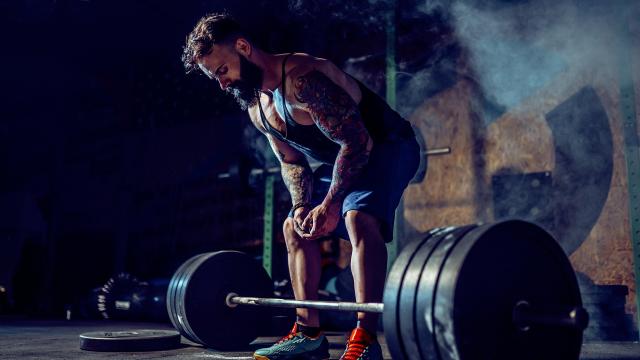The deadlift is one of the simplest things you can do in the gym: You just grab a barbell, and stand up. But it’s also one of the most intimidating. If you’ve been told all your life to “lift with your legs, not your back,” you may worry that you’ll accidentally lift with your back and something terrible will happen. (This is, for the most part, an unfounded fear.)
So we’ve gathered a collection of videos that will demystify the deadlift for you. And if you already deadlift, we have a bunch that will help you dial in the best technique for your body.
Sohee Lee on the very basics
In this video, Sohee Lee explains how to keep a safe, strong position with your back — the very thing beginners are often most concerned about. She then walks you through the basics of performing a deadlift, and even does it in both of the two common stances: sumo (with legs outside of the arms) and conventional (with arms outside of the legs). Her explanation of “pulling the slack out of the bar” by listening for the click of the bar against the plates is a helpful beginner cue. If you need a thorough but not overly complicated intro video, start here.
Calgary Barbell on sumo vs. conventional
This short and sweet video features Bryce Krawczyk of Calgary Barbell explaining how to decide whether you should train the sumo or the conventional deadlift. While people will often claim that certain body types work better with one stance than the other (or even that sumo is “cheating,” a concept that makes no sense if you understand powerlifting at all), the truth is you need to train both and find out. Bryce has tips on how to do that.
Juggernaut on the pillars of deadlifting
If you’re ready to have the lift broken down into more detailed pieces, Juggernaut Training Systems has you covered. They have a five-piece “pillars of deadlift” series for each of sumo and conventional. In both, you’ll learn about where to place your feet, how to breathe and brace during the lift, and how to start and finish the lift. And as a bonus, we get to see these principles demonstrated by world-class competitive powerlifters Marisa Inda (for conventional) and Kristin Dunsmore (for sumo).
JP Cauchi on pulling the slack out of the bar
One of the most crucial steps in deadlifting, and one of the easiest for beginners to forget, is what’s known as “pulling the slack out of the bar.” For people who pull enormous amounts of weight, the bar will actually bend before the weights leave the floor; that bend is the “slack” we’re talking about. But even if you’re deadlifting the lightest weights in the gym, the same principle still applies. You can’t have any looseness anywhere in the whole system, or else you’ll get out of position when you start your pull. This video from John Paul Cauchi explains what this means and how to do it.
Mike Israetel on how often to deadlift
There are two big deadlift myths that gym bros will toss around. One is that deadlifts are dangerous and will hurt your back; I think we’ve put that one to bed. The other is that deadlifts will “fry your CNS” (your central nervous system) or be so fatiguing you can’t possibly train them more than once per week.
While it’s true that deadlifts are a tough exercise, there’s no reason why you have to limit them to a single session per week. As with any exercise, the more you do them, the better your body will adapt. Mike Israetel explains the truth behind the myth here.
Alan Thrall on deadlift variations
Two of the most common deadlift variations are confusingly similar, both to regular deadlifts and to each other. These are the stiff-legged deadlift, or SLDL, and the Romanian deadlift, or RDL.
Both of these exercises are used as accessories; you’ll train regular deadlifts in one part of your workout, and then usually have a lighter set of RDLs or SLDLs afterward or on a different day. (Sometimes a program will call for these without any regular deadlifts, which is also fine.) Both are slightly harder than regular deadlifts, so you’ll use less weight on them. Alan Thrall explains the differences and similarities here.
MegSquats on how to set up for the deadlift
Watching powerlifters deadlift is a great way to learn about technique. Everybody has their own quirks, and when you see enough different examples, you’ll get ideas for things you could do differently in your own workouts. But an awful lot of powerlifters approach the bar in weird ways. Why does he hold his arms out like that? Why does she wiggle her feet?
In this video, Meg Gallagher explains her own setup, which involves an unusual motion she calls “T. rex arms” to help her engage her lats. Then she goes on to narrate and imitate the setups of two other powerlifters with very different styles. It’s a great introduction to the idea of finding your own, personal, best way to approach the bar.

Leave a Reply
You must be logged in to post a comment.